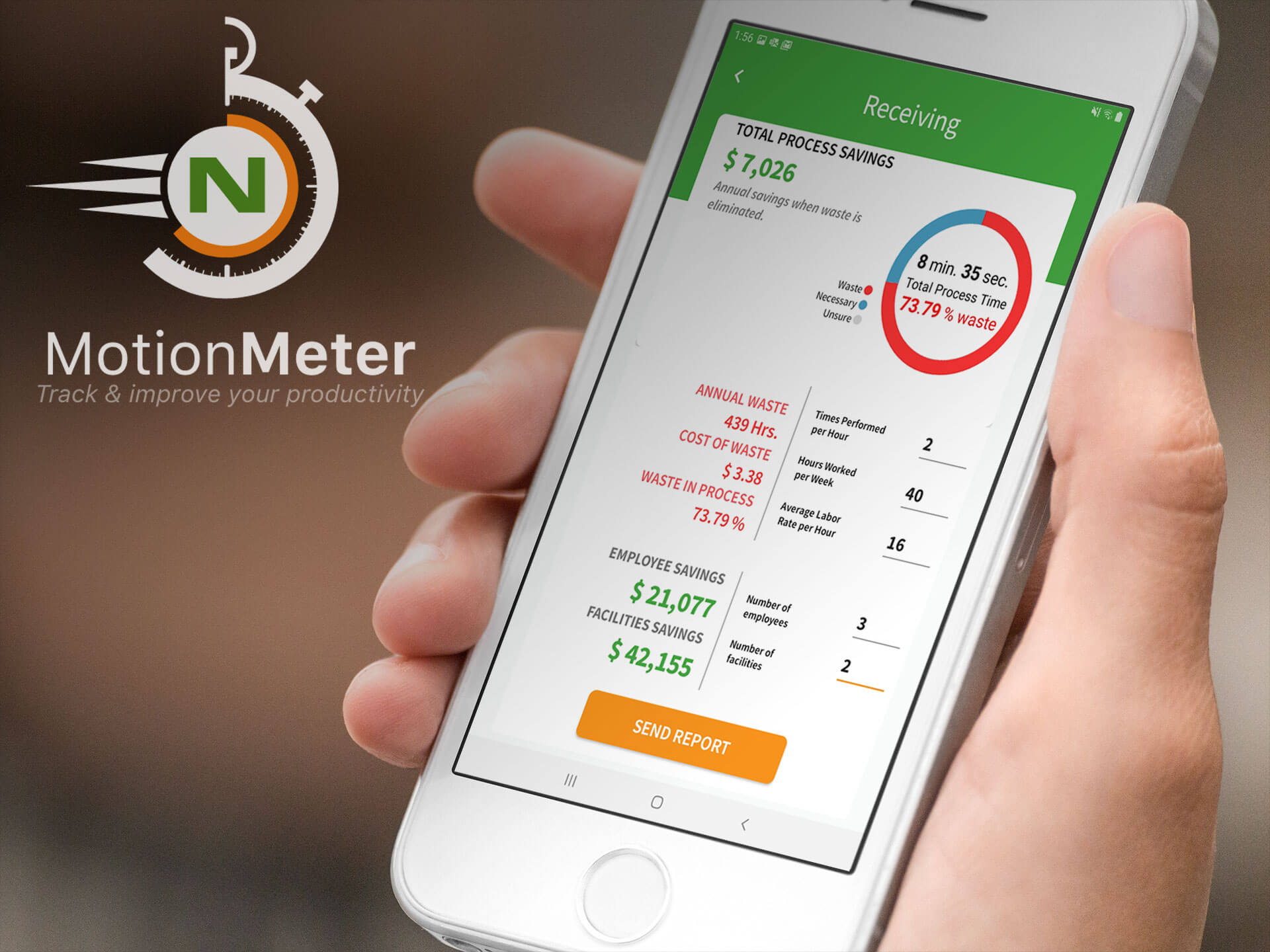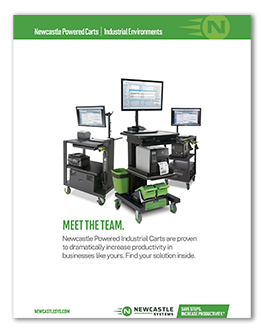
Lifting, bending, twisting, and typing top the list of repetitive motions performed in many occupations like warehouse work, nursing, and manufacturing. It’s no wonder that many of these industries are plagued by work-related injuries like musculoskeletal disorders (MSDs).
Prolonged standing or awkward movements can also cause or aggravate many of the cumulative trauma disorders that lead to MSDs. Fortunately, with better attention paid to ergonomics and the use of portable workstations, businesses have the power to improve the well-being of their workers and enjoy other significant benefits.
What is the Science of Ergonomics?
In a modern workplace where productivity, efficiency, and employee well-being are vital ingredients of success, the role of ergonomics can’t be overstated. Often termed as “human factors engineering,” ergonomics is an applied science concerned with designing and arranging the things people use for work so they are the safest and most efficient.
The origins of modern ergonomics date back to the early 1900s, coinciding with the Industrial Revolution. The initial focus at that time was on simultaneously reducing worker fatigue and enhancing productivity. Over time, ergonomics has evolved to focus on all aspects of work so they fully consider human limitations and capabilities.
How Poor Ergonomics Lead to Employee Injuries
Ergonomic injuries, which include many repetitive strain injuries and MSDs, account for a large portion of total workplace injuries across the United States. According to the American Society of Safety Professionals, roughly one-third (33%) of all worker illness and injury cases in the U.S. are considered ergonomic injuries.
Some of the most common types of ergonomic injuries include lower back pain, carpal tunnel syndrome, tendinitis, neck and shoulder injuries, and tennis elbow. OSHA reports that claims related to inflammation alone can cost employers more than $30,000 per claim.
 Many different factors cause or contribute to ergonomic injuries. One of the most common is repetitive motion. This happens when an employee is required to perform the same task, such as squeezing or twisting, over and over again.
Many different factors cause or contribute to ergonomic injuries. One of the most common is repetitive motion. This happens when an employee is required to perform the same task, such as squeezing or twisting, over and over again.
Another common cause of ergonomic injuries is employees being required to hold awkward positions or perform uncomfortable movements over and over. For example, a warehouse worker might be asked to lean over a shelf to pick products or reach to enter fulfillment data into a computer.
Other potential causes of ergonomic injuries include:
- Unsafe workplace conditions
- Lack of rest breaks
- Lack of training on how to perform tasks safely and efficiently
Easing Employee Burdens Using Portable Workstations
The best way to prevent ergonomic injuries is to address the various hazards that create them. Employers can create a healthy and safe work environment by addressing ergonomics, which means designing the workspace to meet the needs of the workers. One way many employers are accomplishing this is by implementing portable workstations.
 Portable workstations are mobile technology carts that untether workers from fixed locations. This allows them to safely access technology, data, and workplace tools at the point of task instead of having to travel or reach to for these purposes.
Portable workstations are mobile technology carts that untether workers from fixed locations. This allows them to safely access technology, data, and workplace tools at the point of task instead of having to travel or reach to for these purposes.
Everything necessary to complete a task is placed on wheels, so workers can access the tools wherever they are needed. These portable workstations are powered by long-lasting battery pack, which can be easily recharged or swapped out daily.
By themselves, mobile workstations can make tasks like warehouse picking, labwork, or caring for patients more efficient. However, these mobile powered carts can still lead to ergonomic injuries if they aren’t properly configured. Fortunately, some of the most frequently-incorporated workstation features support ergonomics. These include:
- Height Adjustability — A portable workstations should be height adjustable so it will accommodate workers of different heights across various shifts.
- Tilting and Rotating — Monitors and shelves should tilt and rotate to prevent neck strain and provide easier access to work.
- Adjustable Keyboard & Mouse — Many carpal tunnel syndrome injuries are caused by repetitive typing without proper support. A mobile cart can provide sliding and adjustable keyboard trays so each employee can have the ergonomic setup they need.
- Easy to Reach Storage — Mobile workstations should have compact, intuitive storage systems such as drawers, cabinets, hooks, and peg boards to hold supplies, technology, and waste.
- Good Task Lighting — Having good task lighting integrated into the workstation can prevent eye strain and make accessing some tools more convenient.
- High- Quality Casters — Because these workstations are portable, they are meant to move from one place to another throughout the workplace. They must be equipped with high-quality casters, otherwise employees can get injured straining to push or turn the heavy system.
Additional Benefits of Implementing Mobile Workstations
In addition to reducing workplace injuries, here are some of the added benefits of implementing mobile workstations in just about any industry:
 Better Collaboration — Mobile carts support more collaboration in the workplace, allowing employees to enter data in real time. This saves time and resources, so employees can collaborate on ways to improve efficiency.
Better Collaboration — Mobile carts support more collaboration in the workplace, allowing employees to enter data in real time. This saves time and resources, so employees can collaborate on ways to improve efficiency. - Fewer Errors — Mobile workstations allow your business to put productivity tools at the place where work is being done, which results in fewer errors.
- Improved Customer Service — The improved efficiency that results from using mobile workstations will translate into a better customer experience. For example, Ecommerce customers will get orders faster and patients will receive a higher standard of care.
- Enhanced Employee Experience — When employees don’t have to struggle to get their work done and feel valued in the workplace, your business will experience less turnover and enjoy a more positive internal culture.
Business pressures place a significant burden on human workers, particularly those tasked with producing more work with fewer resources. When employees are asked to perform the same movements over and over, this can lead to MSDs, which will result in lost work time, reduced production, lower employee morale, and higher turnover. Implementing portable workstations designed with ergonomics in mind will prioritize employee well-being and improve operational efficiency at the same time.












